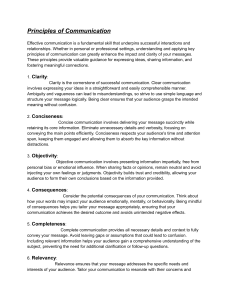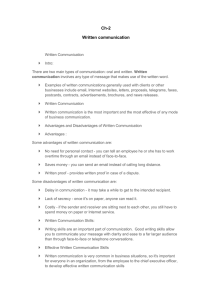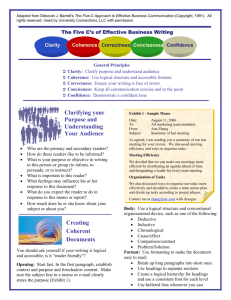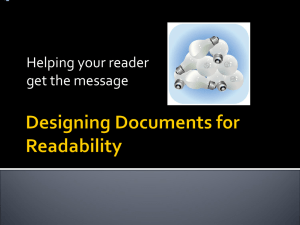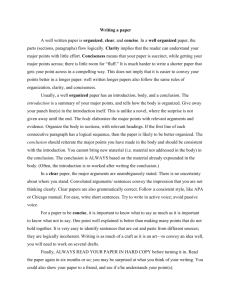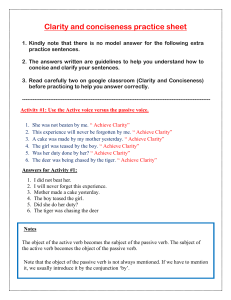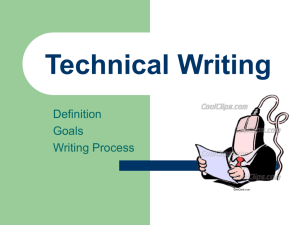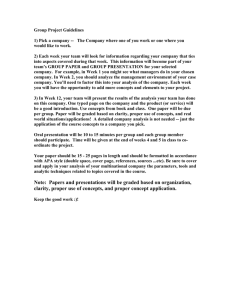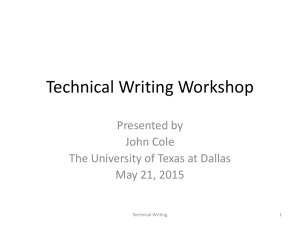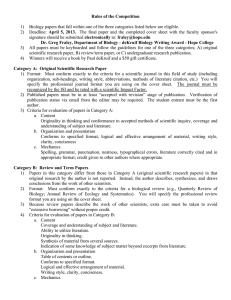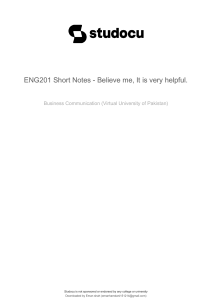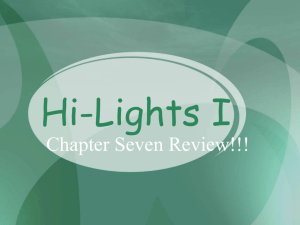Technical Writing
advertisement
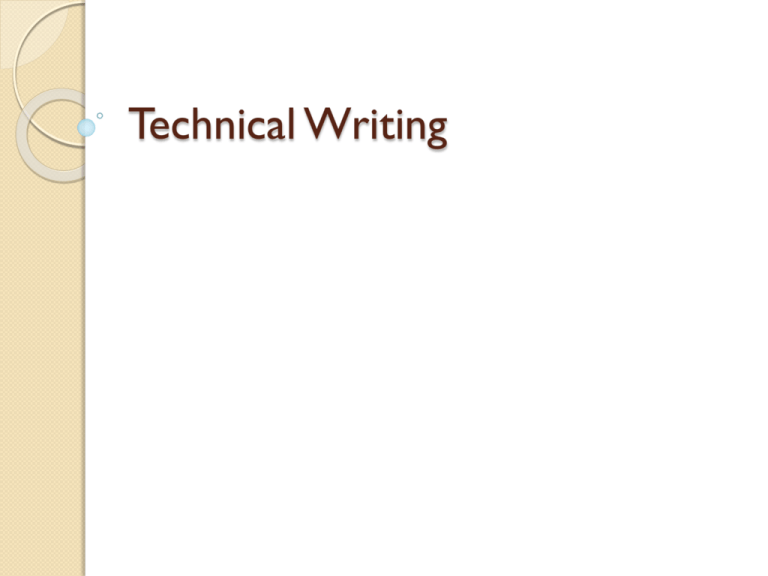
Technical Writing A Definition Technical writing is communication written for and about business and industry. It must be quantifiable, precise, and easily understood. It is objective. It is written factually using short sentences and paragraphs with denotative words. It uses highlighting techniques (graphics, headings, various fonts, white space, bullets, etc.) What Technical Writing is NOT! It is not literature (prose or poetry). It is neither an expressive essay nor an expository essay. It is not journalism. It does not focus on sensory images 5 Traits of Technical Writing Clarity (Organization) Conciseness (Sentence fluency/word choice) Accessible Document Design (Ideas and content) Audience Recognition (Voice) Accuracy (Writing Conventions) Clarity The most important criteria for effective technical writing! Technical writing is not a mystery which seeks to create suspense. It must be clear. The ultimate goal of effective technical writing is to say the same thing to multiple readers. Clarity Example Please plan to prepare a presentation on sales. Make sure the information is very detailed. Thanks. What don’t we know in this memo? 1. When is the meeting? 2. Where is the meeting? 3. Who is the meeting for? 4. How much information is “very detailed”? 5. How will the presentation be made? 6. Why is the meeting being held? 7. What does the manager want to be conveyed about sales? Checklist for Clarity Who is the audience and what will he or she know about the topic? What do you plan to do, want the audience to know, or want to know yourself? When should the task be completed, or when do you need an answer? Where will the work take place? Why is the task important? How should the task be performed? Conciseness Conciseness is achieved through short words. Changing Long Words to Short Words Cognizant Know Endeavor Try Domicile Home Morbidity Death Terminate End Other Ways to Be Concise Remove redundancy, passive voice, and long prepositional phrases. Accessibility Technical writing should use a page layout that makes it easy for the reader to understand the text. Highlighting techniques Graphics (tables and figures) Varied Font sizes White space Bullets Headings and subheadings Numbered lists Italics Varied Font types Underlining Pictures Audience Recognition Writing successfully to the three types of audiences (high-tech peers, low-tech peers, lay readers) requires different techniques. Achieving Audience Recognition Audience Style Example High Tech Peers Abbreviations/Acronyms okay. Please review the OP and EN Low Tech Peers Abbreviations/Acronyms need definitions Please review the OP (Operating Procedure) Lay Readers No abbreviation/acronyms Please review the operating procedure. Accuracy Effective technical writing must be correct. Use the computer’s spell check. Be objective about your own writing. Use peer evaluations—other’s see errors we miss. Read it aloud. Read it backwards.
